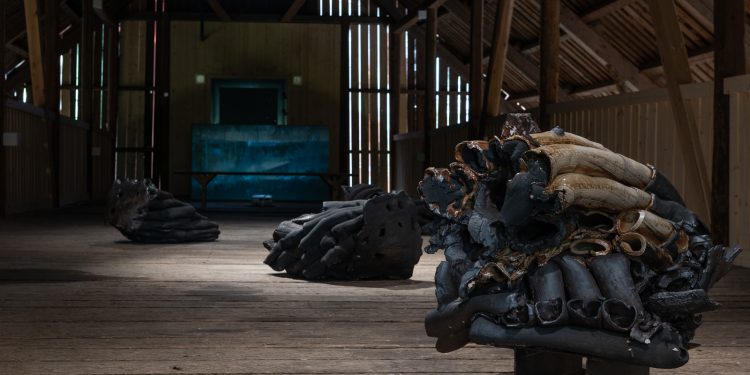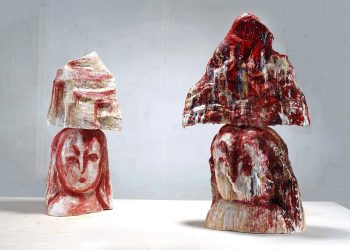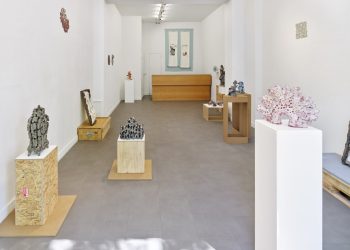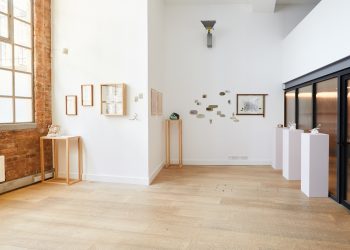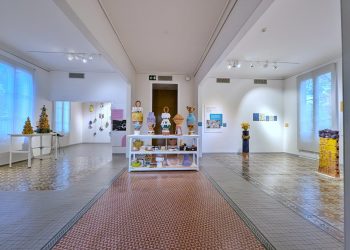Summer exhibitions at the Center for Ceramic Art in Ringebu, Norway
June 4 – September 11, 2022
The Centre for Ceramic Art is a newly established, artist-run arena for innovative projects, artistic exchanges and workshops in clay. Throughout the year, artists are invited to stay as our artist-in residence, followed by an exhibition and a presentation programme.
Centre for Ceramic Art’s activities are divided over four floors of the barn building at Ringebu Vicarage: the cellar which houses the Monumental Studio, Fjøset (the Byre) as an experimental project room, and Trevet (the Hayloft), Kjøringa and Golvet as flexible exhibition spaces for pottery, curated exhibitions and invited guest artists. With four floors dedicated to ceramic activity and a total floor space of 600 square metres, everything required to realise the potential breadth, depth and diversity of ceramic art is in place. The centre has a strong focus on providing opportunities for professional artists to produce work, as well as offering facilities for stays, courses and studio work that are on a par with the best international residencies. Taken together, this means that Ringebu has a basis for establishing a centre of excellence in ceramics that has ambitions to be of regional, national and international importance.
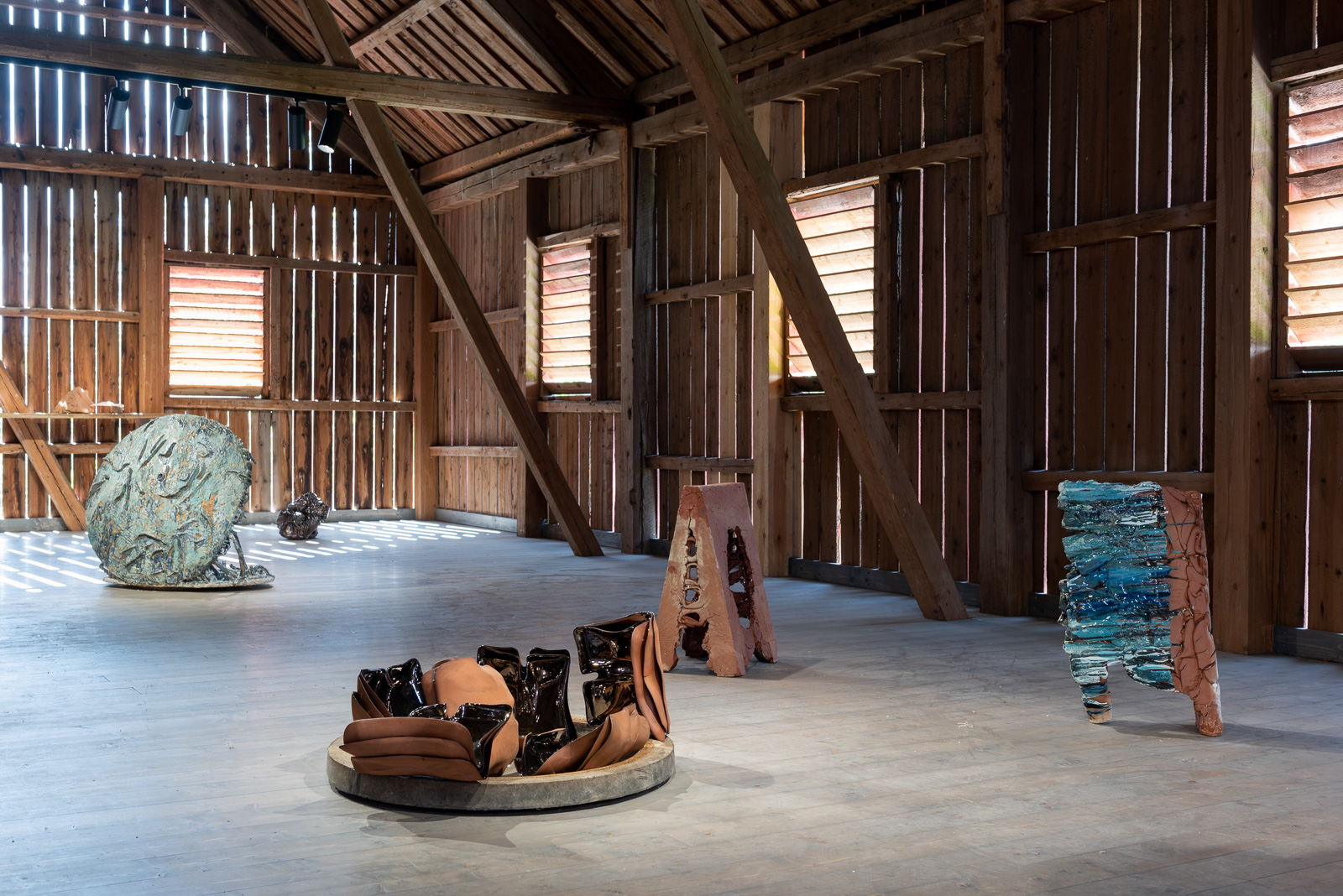
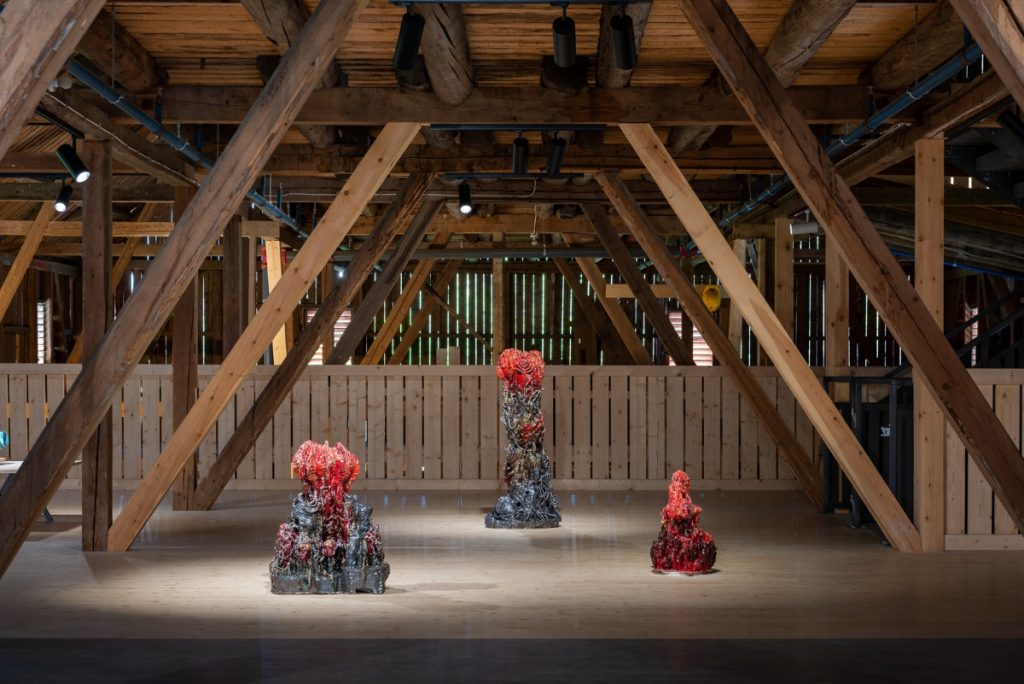
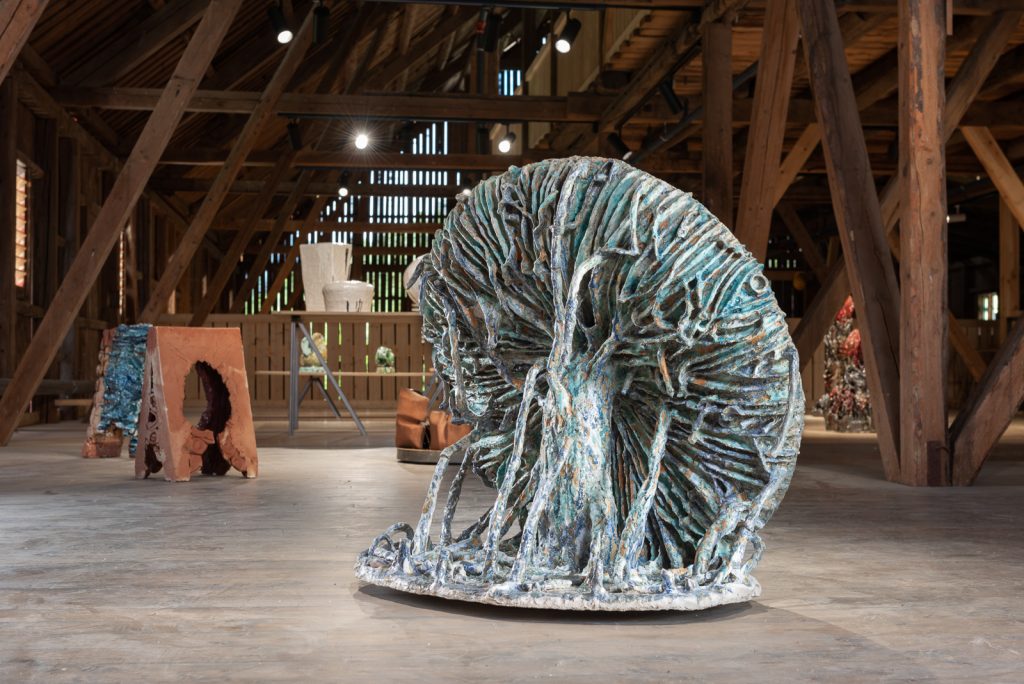
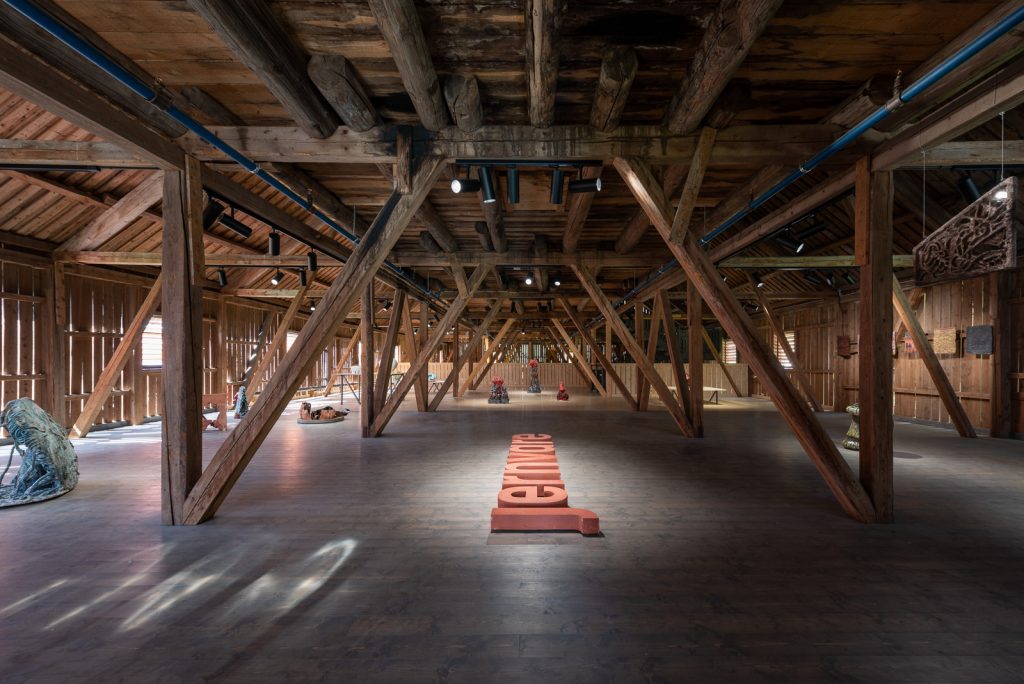
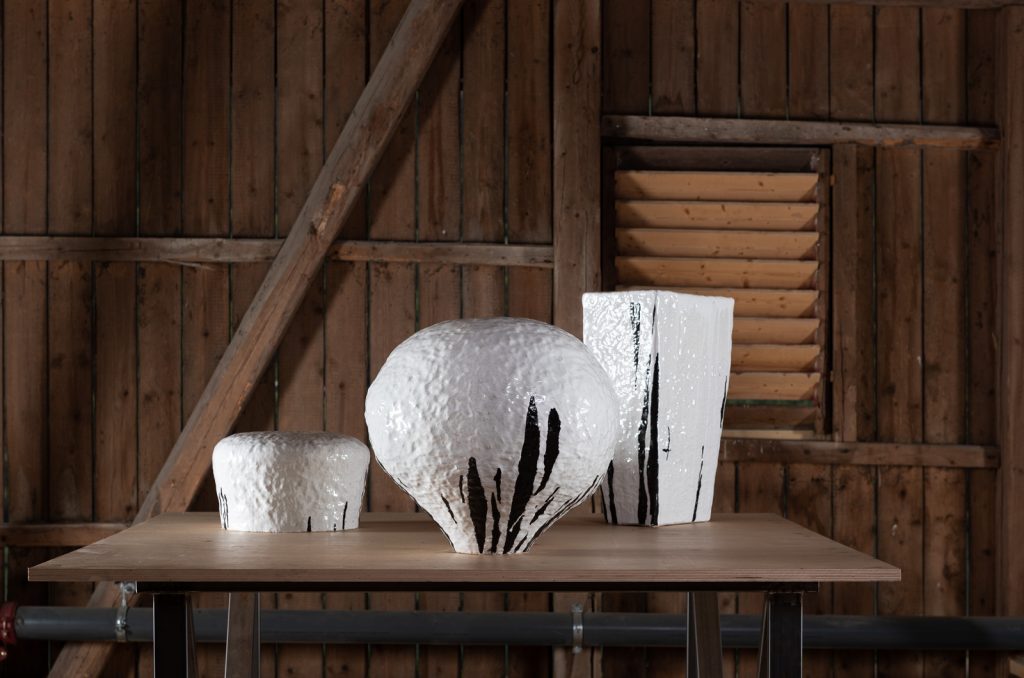
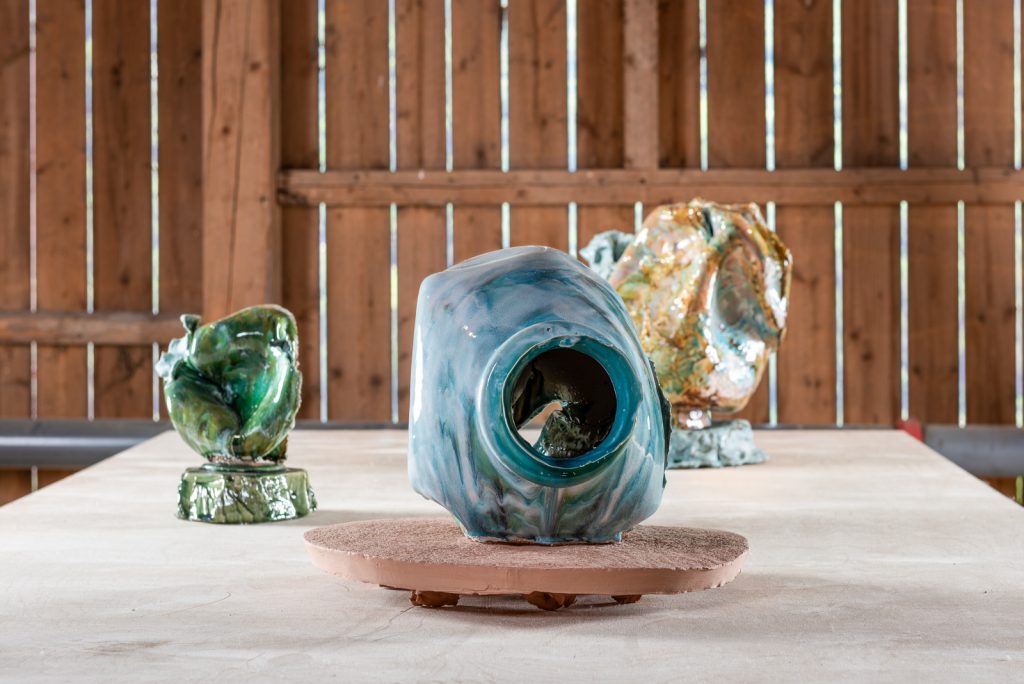
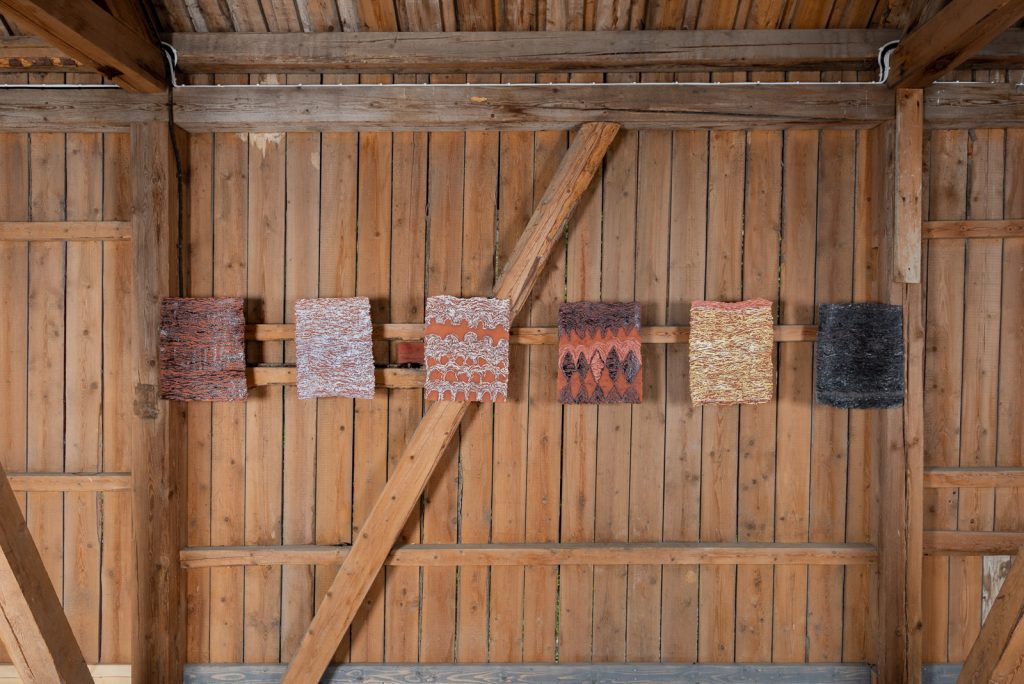
Made in Ringebu (TREVET)
Heidi Bjørgan, Tovelise Røkke-Olsen, Takumi Morozumi, Toril Redalen, Eirik Falckner, Pauliina Pöllänen, Trine Hovden, Brit Dyrnes & Tiril Havdal
The group exhibition ‘Made in Ringebu’ presents guest artists who have worked in the studio at Centre for Ceramic Art the last years. The exhibition has been curated by Ingunn Svanes Almedal. It shows that ceramic art covers a large range of artistic approaches to clay and ceramics as materials. The exhibiting artists are pushing back the boundaries of clay and ceramics’ relevance and what use society can put them to.
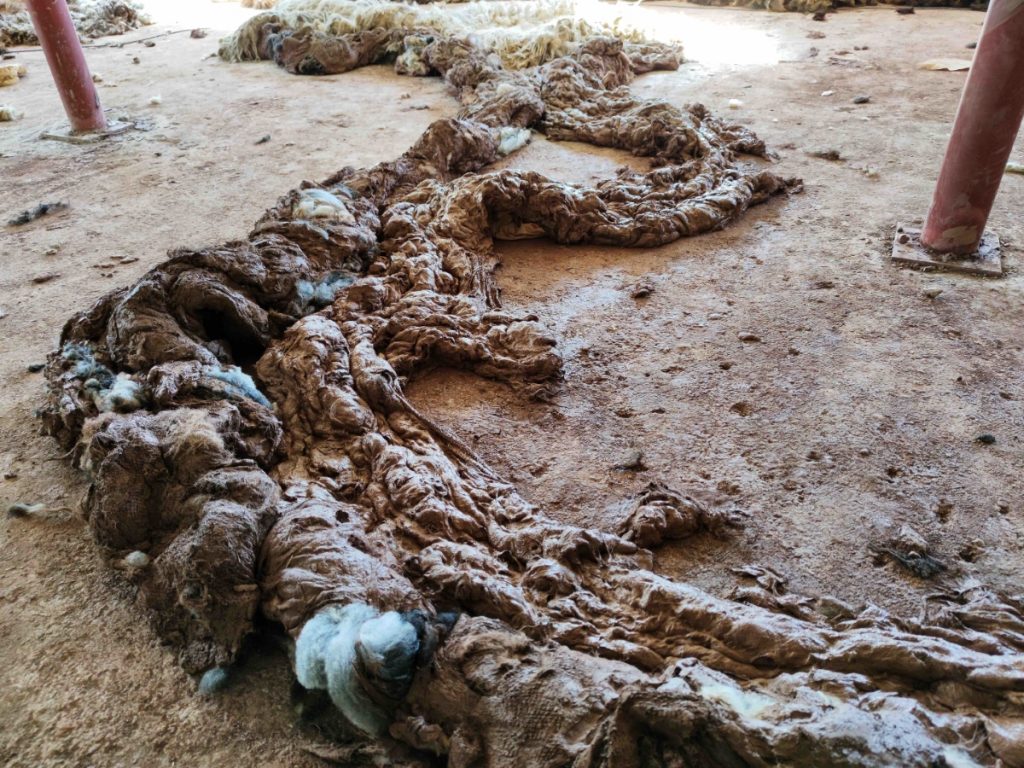
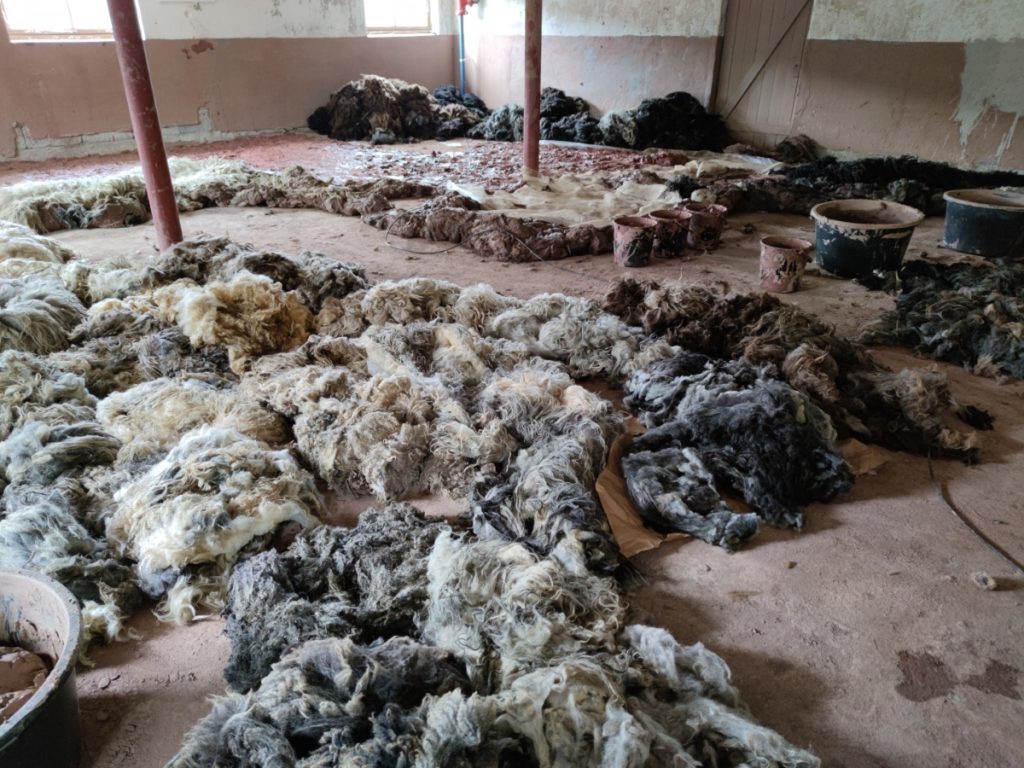
Alexandra Engelfriet – Intertwining (FJØSET)
We are proud to present Alexandra Engelfriet as this year’s guest artist in Fjøset. Alexandra Engelfriet (Netherlands) was invited to «take over» the byre, our project room, after Katrine Køster Holst. Alexandra visited Ringebu in September 2021 to see space and plan her project and returned this spring as our guest artist in Fjøset.
Alexandra has been using the clay that was left in Fjøset after Hyangjong Oh’s project in 2019 and Katrine Køster Holst’s project in 2020-2021. The clay has been recycled and turned into a thick slurry that has been mixed with local sheep wool and pigments to create different colour nuances. With this Alexandra has built an installation in Fjøset, assisted by two students from Oslo National Academy of the Arts, Silje Kjørholt and Soo Jin Park. Follow Alexandra on instagram for more information about her project.
Raw and related to place
A large amount of raw, untreated wool, from local sheep, will be brought into the rough project space of Fjøset, a former stable. Through the use of this material the project will resonate with the age-old practice of ‘transhumance’, the movement of animals up the mountains in the spring for grazing in the highlands during the summer and down again in the fall to spend the winter in a stable. The wool will come from the sheep that roam the vast open spaces of the highlands above Ringebu.
The process
The wool will be mixed with a large amount of clay-slip, reflecting an age-old way of working with clay without firing it. By mixing it with some material like straw, in this case wool, gives structure and strength to the material and prevents it from cracking. Like a skin the whole floor of the space will be covered with this mixture of wool and clay-slip that will be shaped into a textured, three-dimensional landscape full of spiraling movement, an undulating sea of matter rippling through the space and so reflecting the elements and earth forces that shape the surrounding landscape. The boundaries of the interior space of the stable will concentrate the energy and movement of the process and the work. The wooliness and skin-like textures, in combination with the clay, will engender an experience of intimacy and closeness with the animals and the earth.
End result
The installation will remain in place during the summer. It will gradually dry into a permanent work, which consequently can be taken of the floor and cover the wall of another exhibition space, thus creating a new way of experiencing it. Now the viewer will be confronted with the work, it will tower above him, instead of looking over it horizontally as over a landscape. He or she will alternatively be pulled into the depths of the three-dimensional structure and pushed away by the outward moving energies.
Alexandra Engelfriet is an award-winning artist and performer. Her projects, solo exhibitions, and performances are featured internationally in museums, galleries, and private collections. Her earth art and earthworks explore the essence and physical of being in our place in the world. Engelfriet is also a skilled lecturer, workshop, and masterclass teacher.
Save the date! Alexandra Engelfriet will present her project at Centre for Ceramic Art, Ringebu, September 3rd.
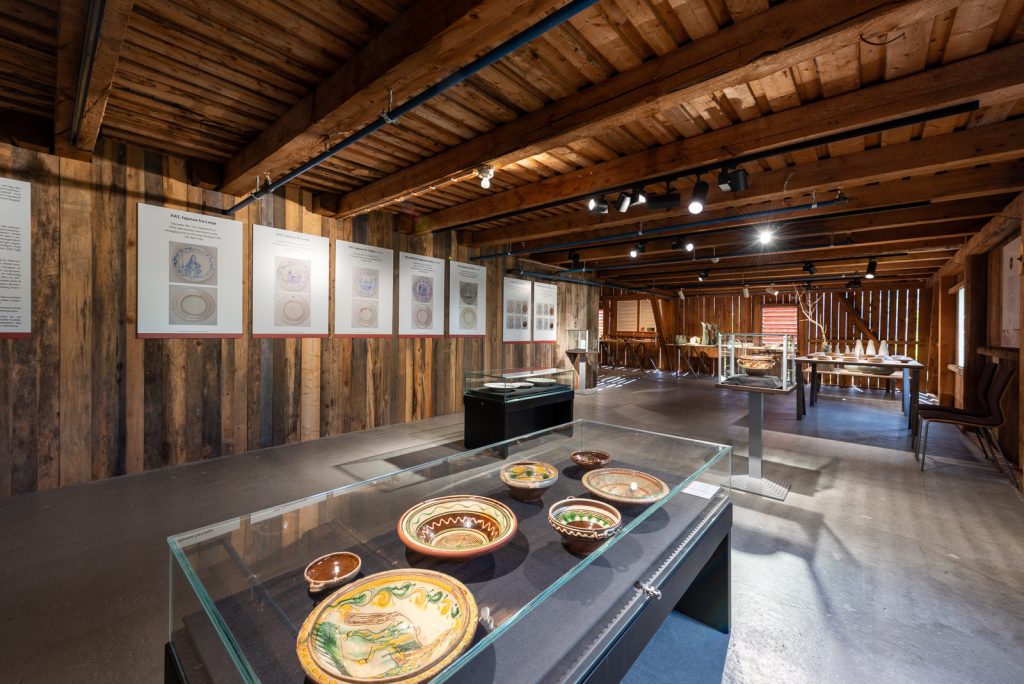
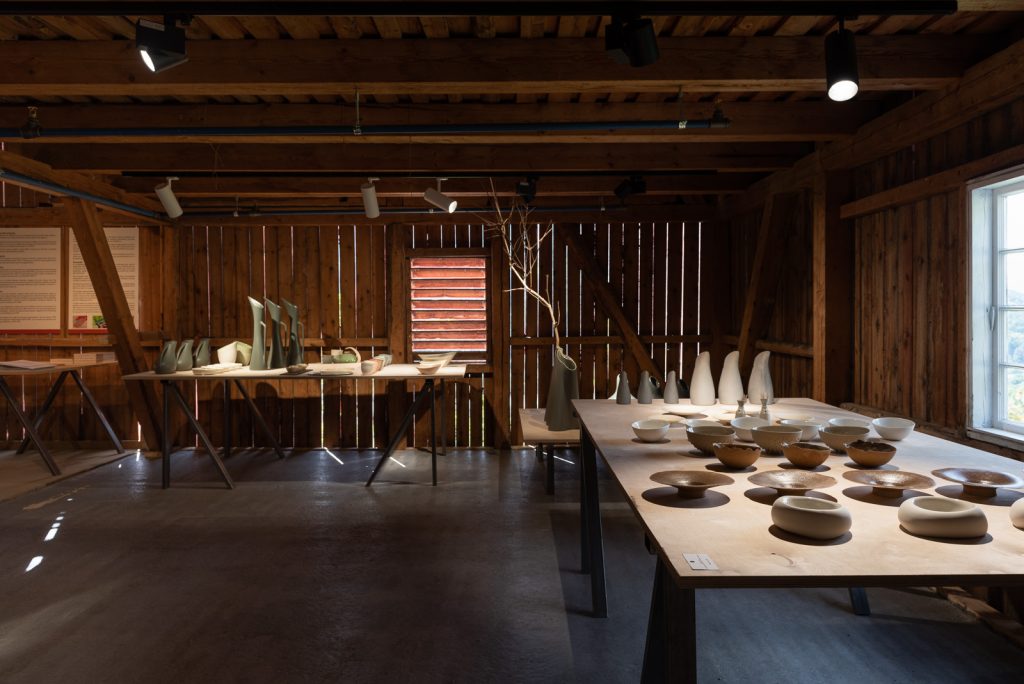
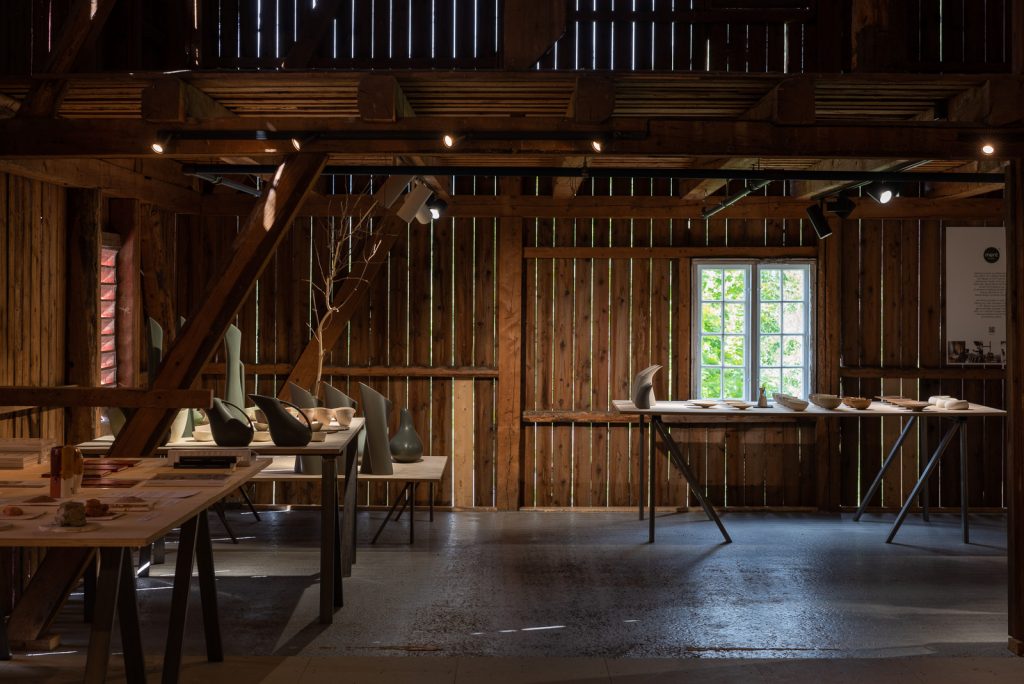
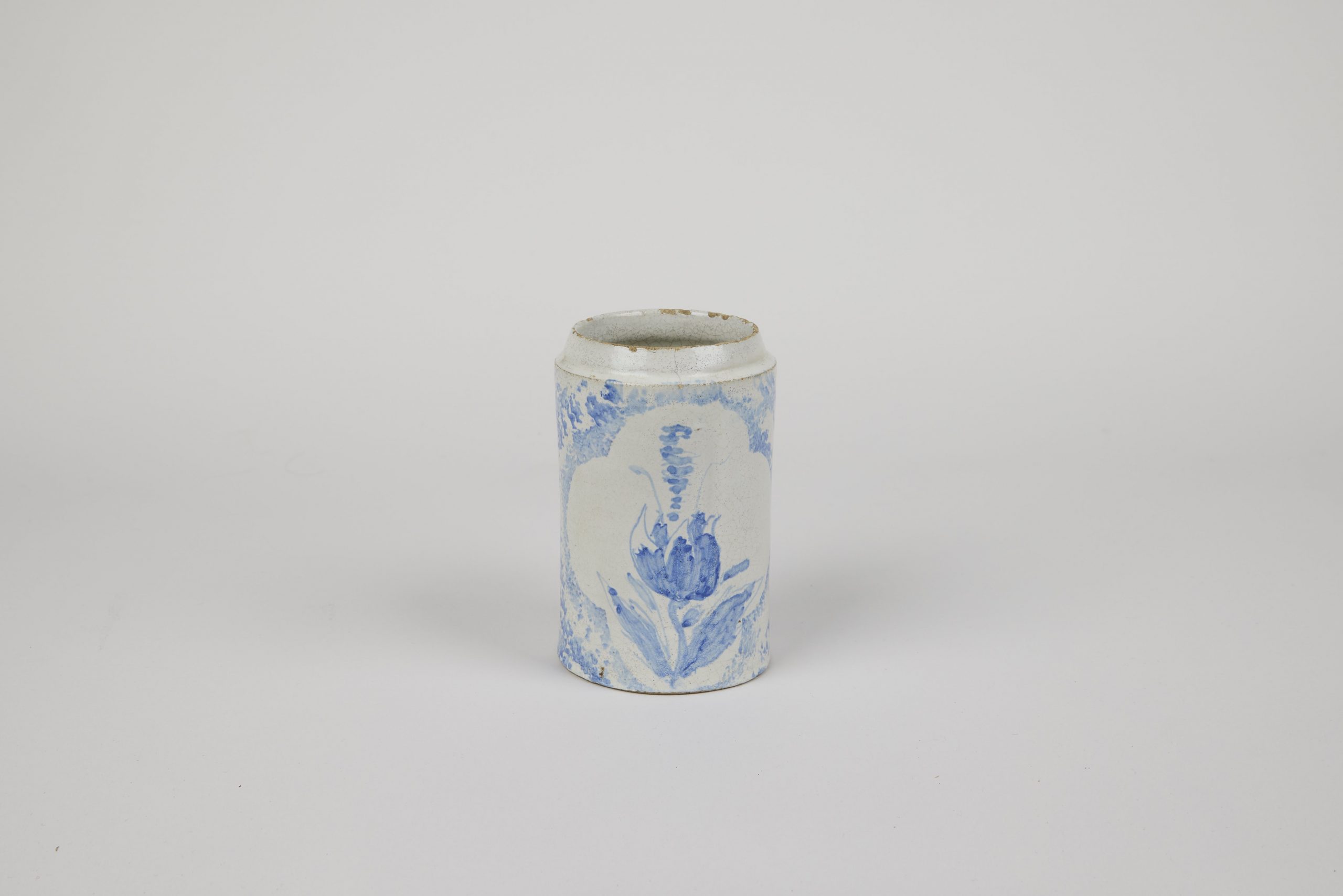
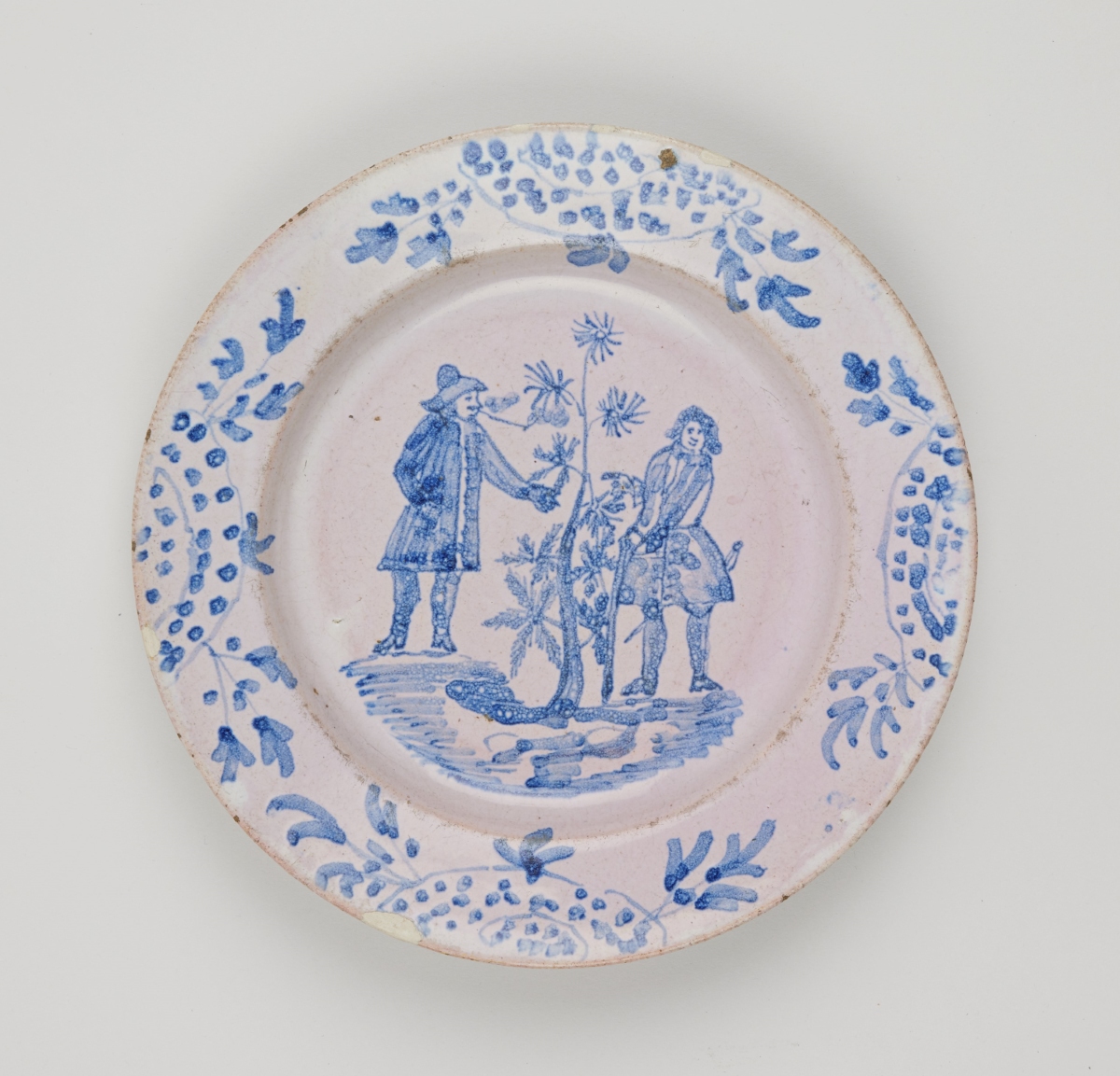
Ceramics in Gudbrandsdalen (GOLVET)
From the Faiance factory at Lesja in 1760 to MENT at Fåberg 2022
The river of Gudbrandsdalslågen flows through the valley of Gudbrandsdalen, extending 230 kilometres from Lillehammer in the south to Lesjaskogsvatnet in the north. The project “Ceramics in Gudbrandsdalen – from the Faiance factory at Lesja in 1760 to MENT at Fåberg 2022” will document and present what and who has produced ceramics in the region, from ceramic industry, to pottery and arts and crafts, throughout the ages.
This is a ongoing project where the exhibition the summer of 2022 will focus on the attempt to establish a faience factory in Lesja around 1760, to Ivar Skurdal (1790-1840) and the work he made as a potter at Mela, before moving forward to the design duo MENT and their production of porcelain objects at Fåberg outside of Lillehammer today.
As a part of the exhibition we’ve established an open pottery with demonstrations every day from 10am to 5 pm. Free mini-workshop every Sunday where children are welcome to try throwing on the wheel and hand building with clay.
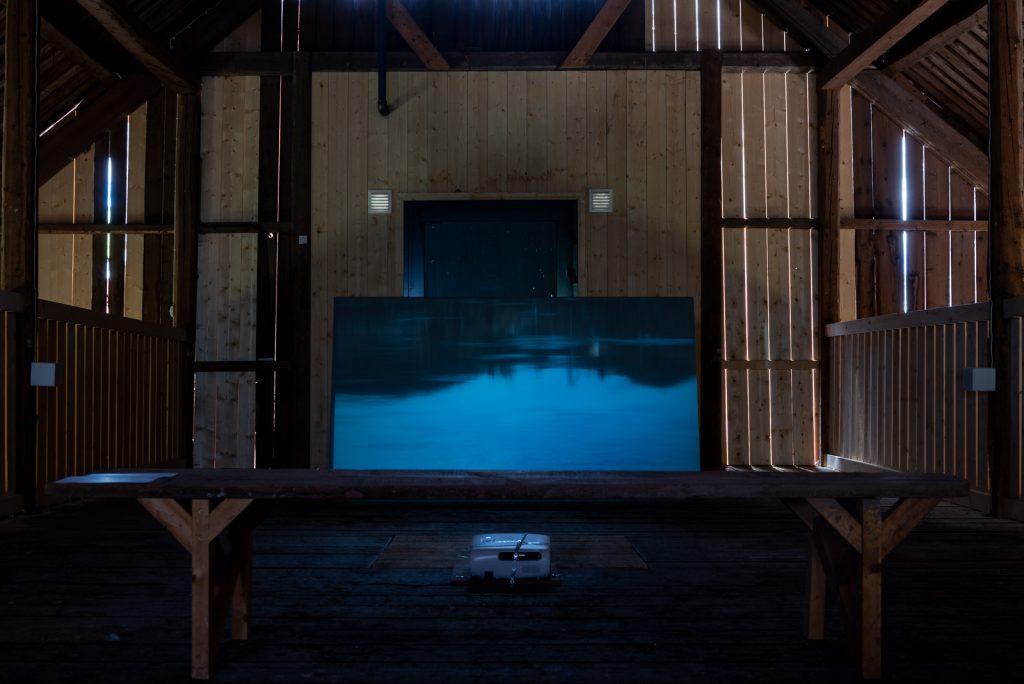
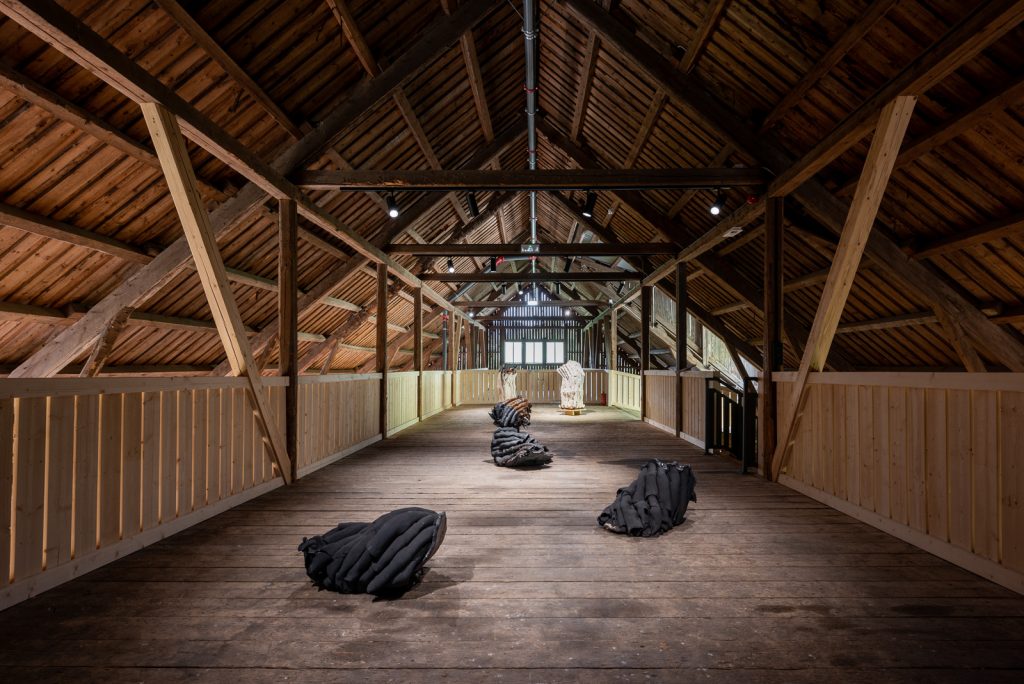
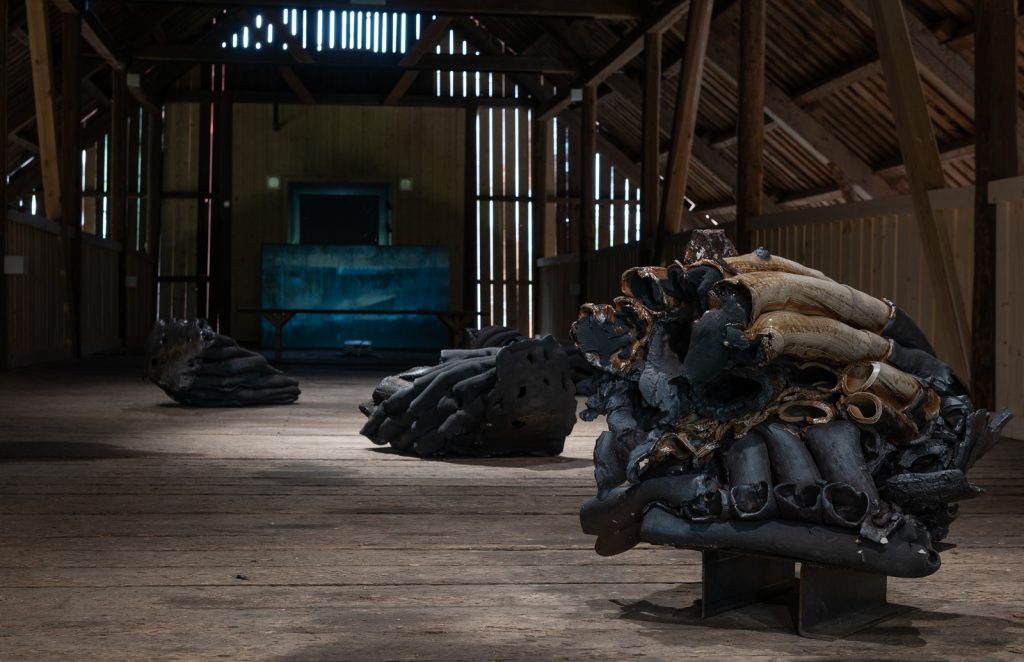
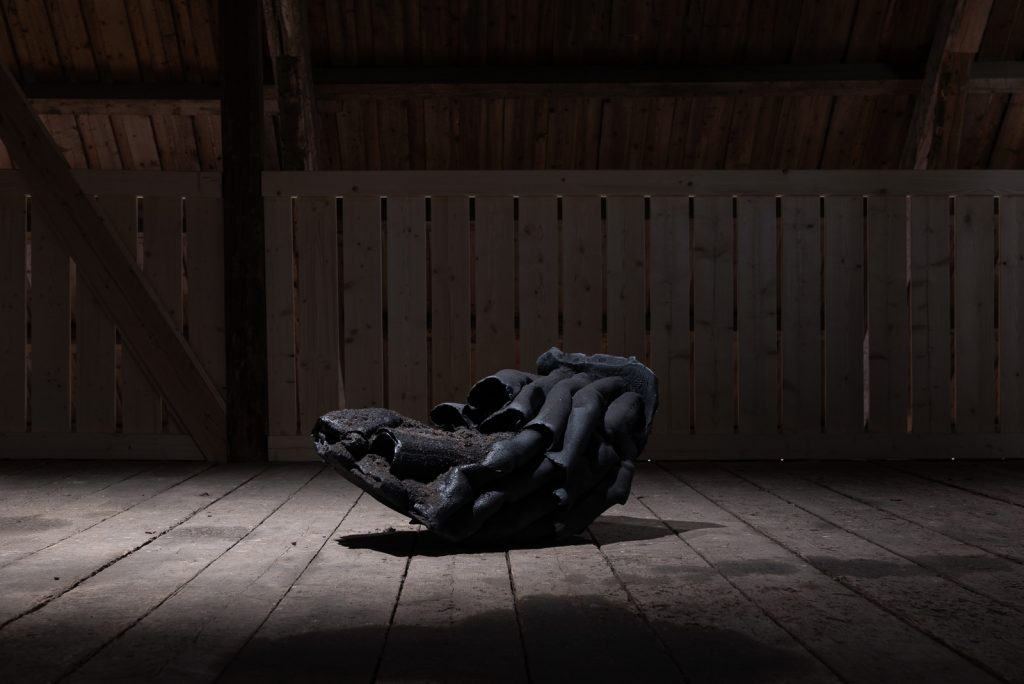
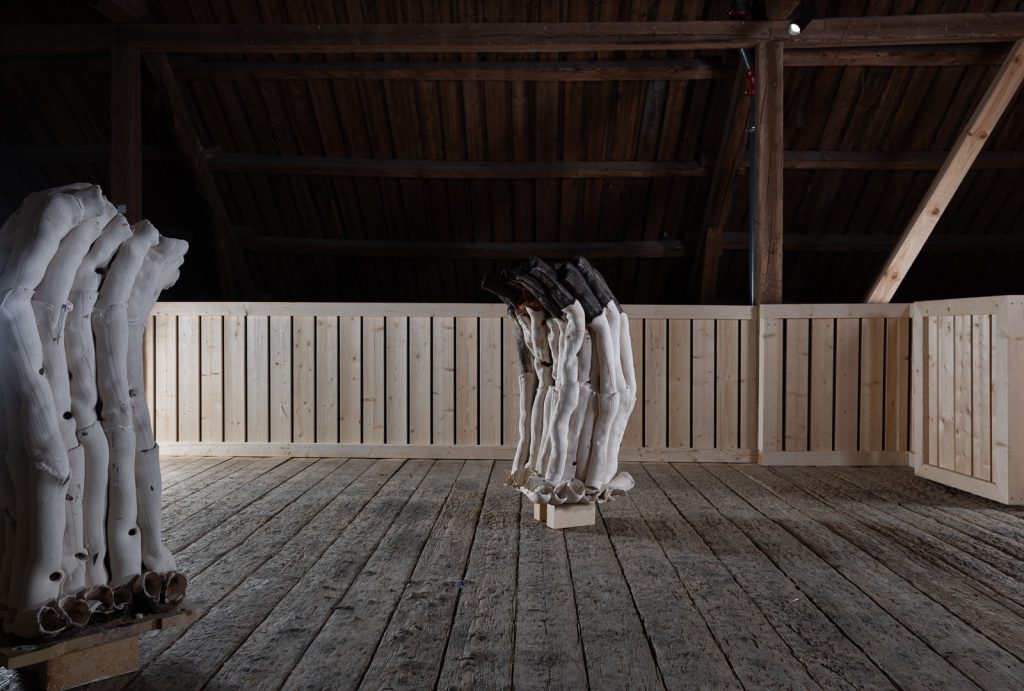
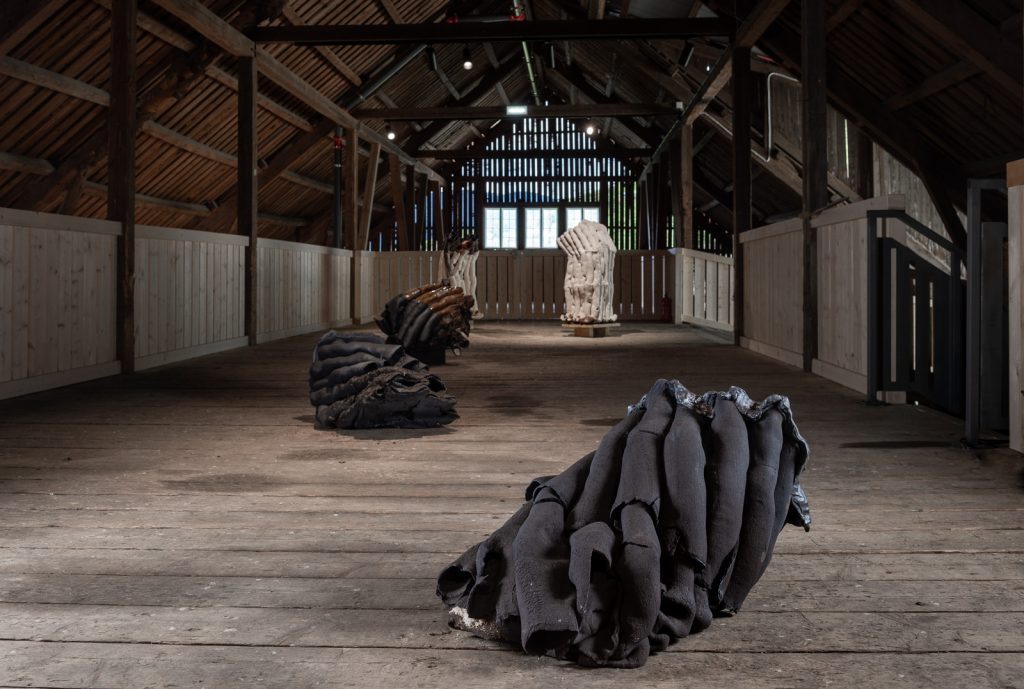
The Atmospherics 12 + Torbjørn Kvasbø (KJØRINGA)
Torbjørn Kvasbø is exhibiting new work at Kjøringa, together with an audio visual installation by Trond Lossius and Jeremy Welsh
The Atmospherics is an ongoing collaborative project by Trond Lossius and Jeremy Welsh, begun in 2014. The project further developed our interest and research into notions of “place”, explored here through field recording in sound and video. The material collected on field trips is processed and edited in order to realise large-scale (and sometimes smaller scale) audio-visual installations in which aspects and elements of different locations are combined to produce a particular temporary place that refers to, but does not literally represent, actual places that have been visited and documented. Processes of abstraction and filtering allow the material to be transformed. Editing and montage de- and re-contextualise the images and sounds. Multiple viewpoints within an installation, and the use of surround sound enable the construction of an immersive environment that invites the viewer to interact with the material through their own perceptions, memories and emotional responses.
Each installation is developed specifically in response to the exhibition location in which it will be presented, and to that extent, the works have an aspect of site-specificity. The architectural and acoustic qualities of the installation space form the basis for the construction of each iteration of the project, and material to be used is edited, modified and mixed in situ, so that each time the work is exhibited it takes on new aspects. Furthermore, the video and audio material used in the installation has often (though not always) been related to the broader environment in which the exhibiting venue is situated, so that local references will trigger particular responses in visitors.
The Stack is based on archetype vessel forms and what they might contain in our history. A reflection play with the vessel form: it is a classic vessel shape, made by cylinders, in a spiral pattern form. It is also a body, a three dimensional torso with gestures and states of mind.
Technique: Stacked extruded plastic clay tube elements. Cylindric tube elements made from manual extruder, shaped and modelled on top of each other.
References: Haystack, woodstack, rustic fence of diagonal design, log houses. I try to make a story about how we organize our lives, in my culture, for the survival in cold and rough mountain climate. The body’s rhythm in work and rest, the day-and-nights, the seasons, the aging, the changes of generations, over and over again for ever.
Through centuries all the systems developed for making and storage of food and fodder, fuel, protection, log houses, wooden fences, tools: exploiting everything nature could give appears as rituals and ornaments. These rhythms are the living.
My work process in the clay material offers a lot of resistance, and I get to know more of the forces over which I have no control; the incalculable elements in my inner being. Emotional discharges become embodiment of feelings, and the works become actual experiences themselves.
Torbjørn Kvasbø (b. 1953), who is responsible for the Centre for Ceramic Art in Ringebu, has for 45 years constantly explored the craft and sought new knowledge about clay as a material and language. The idea for the Centre for Ceramic Art was a natural result of Kvasbø’s wide-ranging experience, global network and professional position in the field.
Torbjørn Kvasbø was born at Hundorp in Gudbrandsdalen. Kvasbø established a ceramics studio in his grandfather’s house in Venabygd in 1976, and he has for many years offered stays, studio space, firings, workshops and gatherings in Venabygd and in Ringebu, in addition to the many exhibitions he has produced, always in collaboration with and for colleagues in Norway and beyond. Countless ceramicists from Norway and abroad have come for short or long stays in the studios and around the kilns in Venabygd.
Contact
info@senterforkeramiskkunst.no
Center for Ceramic Art Ringebu
Vekkomsvegen 433
2630 Ringebu
Norway
Photo captions
- Made in Ringebu, Ceramics in Gudbrandsdalen, and The Atmospherics 12 + Torbjørn Kvasbø – photos by Thomas Tveter
- Alexandra Engelfriet – Intertwining – photos by the artist)
- Lesja Faience mug and plate – photos by Christian Andre Strand, Norsk Folkemuseum


